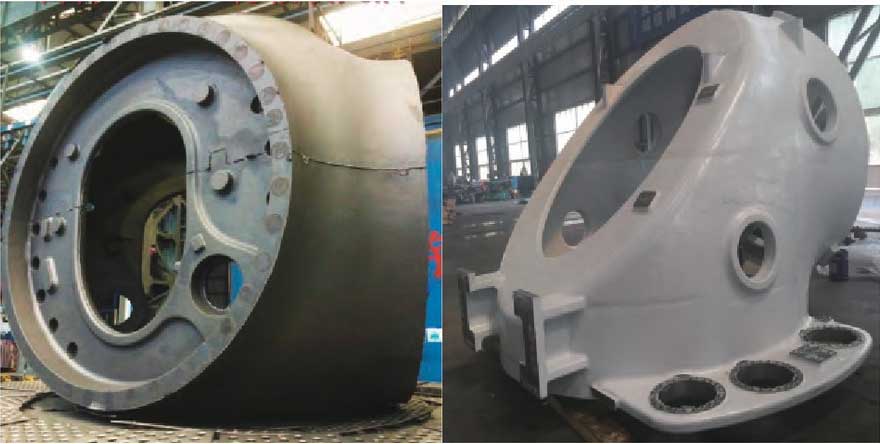
On the premise of good spheroidization of graphite, the mechanical properties of nodular cast iron can be adjusted in a large range by means of heat treatment. After isothermal quenching, nodular cast iron can obtain high strength, high toughness, high hardness and high bending fatigue strength at the same time. This material is often used in key parts such as crankshaft and camshaft in engine.
(1) After austempering, the hardened martensite in the white zone of nodular cast iron obviously reduces the toughness, plasticity and fatigue properties of the crankshaft.
(2) The lower bainite structure generally coexists with the white zone dominated by quenched martensite, and the lower bainite structure generally coexists with the white zone dominated by fragmented residual austenite. The better isothermal quenching structure is: fine upper bainite, lower bainite and less white zone. The white zone is fragmented residual austenite, and quenching martensite is not allowed.
(3) The quenching temperature of nodular cast iron should not be too high to ensure the fine bainite structure, high fatigue strength, and reduce the number of white zone structure, but the temperature should not be too low to avoid the insoluble ferrite structure.
(4) During austempering of nodular cast iron, low austempering temperature is easy to produce white zone structure dominated by quenched martensite. The selection of austempering temperature should ensure that there is no or a small amount of quenched martensite in the white zone.
The austempering process of nodular cast iron has a great influence on its mechanical properties. Among the process parameters, austenitizing temperature and austempering temperature have the greatest influence. Different austenitizing temperature and austempering temperature lead to different microstructure and mechanical properties after austempering. Therefore, the process tests at different austenitizing temperatures and isothermal temperatures were carried out to find the best process parameters.
